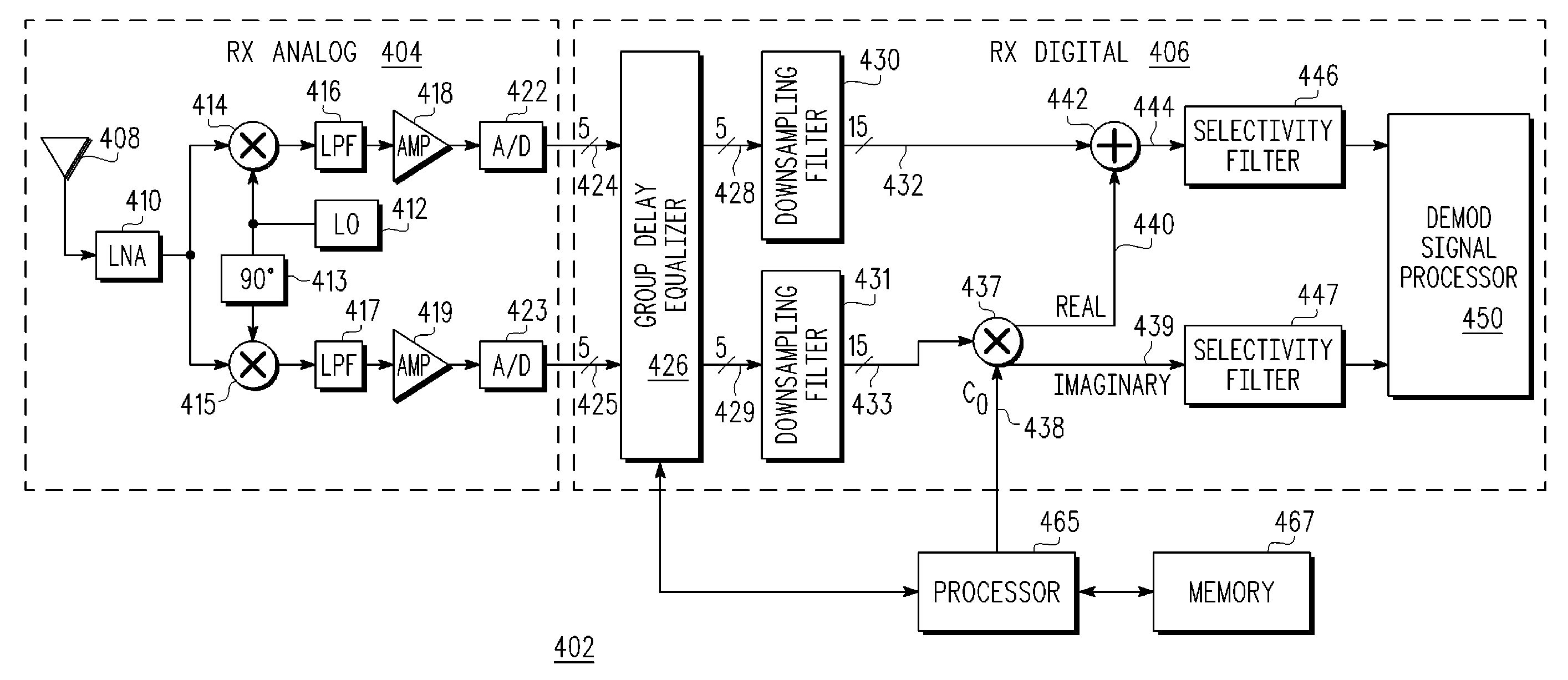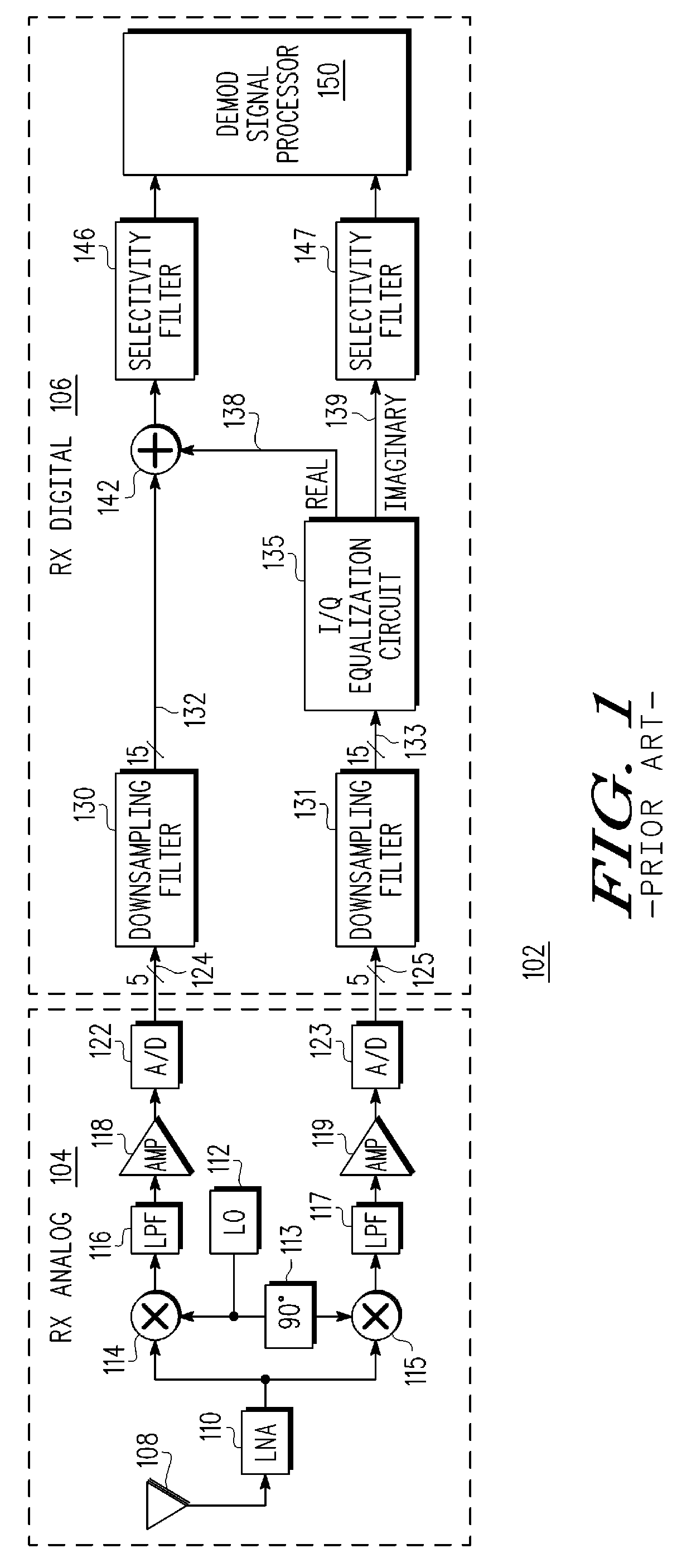Receiver i/q group delay mismatch correction
a technology receiver, which is applied in the field of radio frequency receiver, can solve the problems of channel may have unequal group delay, difficult control of i/q group delay in such receivers, and frequency variation of phase imbalance correction
- Summary
- Abstract
- Description
- Claims
- Application Information
AI Technical Summary
Problems solved by technology
Method used
Image
Examples
Embodiment Construction
[0019]FIG. 4 is a simplified functional block diagram of a low-IF, or near zero-IF, receiver 402 in accordance with one embodiment of the invention. The receiver 402 includes analog circuits 404 and digital circuits 406. The analog circuits 404 include an antenna 408 for receiving a digitally-modulated signal, non-spread-spectrum signal, and a low noise amplifier (LNA) 410. The LNA 410 is coupled to mixers 414 and 415. A local oscillator (LO) 412 is coupled to the mixer 414 to produce an in-phase channel, or I-channel, signal. The LO 412 is also coupled to the mixer 415, via a 90° phase shifter 413, to produce a quadrature-phase channel, or Q-channel, signal. The analog mixers 414 and 415 produce a phase and amplitude imbalance that is approximately constant over the signal bandwidth. The analog circuits 404 include I-channel and Q-channel lowpass analog filters 416 and 417, analog amplifiers 418 and 419, and analog-to-digital (A / D) converters 422 and 423. The analog filters 416 and...
PUM
 Login to View More
Login to View More Abstract
Description
Claims
Application Information
 Login to View More
Login to View More - R&D
- Intellectual Property
- Life Sciences
- Materials
- Tech Scout
- Unparalleled Data Quality
- Higher Quality Content
- 60% Fewer Hallucinations
Browse by: Latest US Patents, China's latest patents, Technical Efficacy Thesaurus, Application Domain, Technology Topic, Popular Technical Reports.
© 2025 PatSnap. All rights reserved.Legal|Privacy policy|Modern Slavery Act Transparency Statement|Sitemap|About US| Contact US: help@patsnap.com



